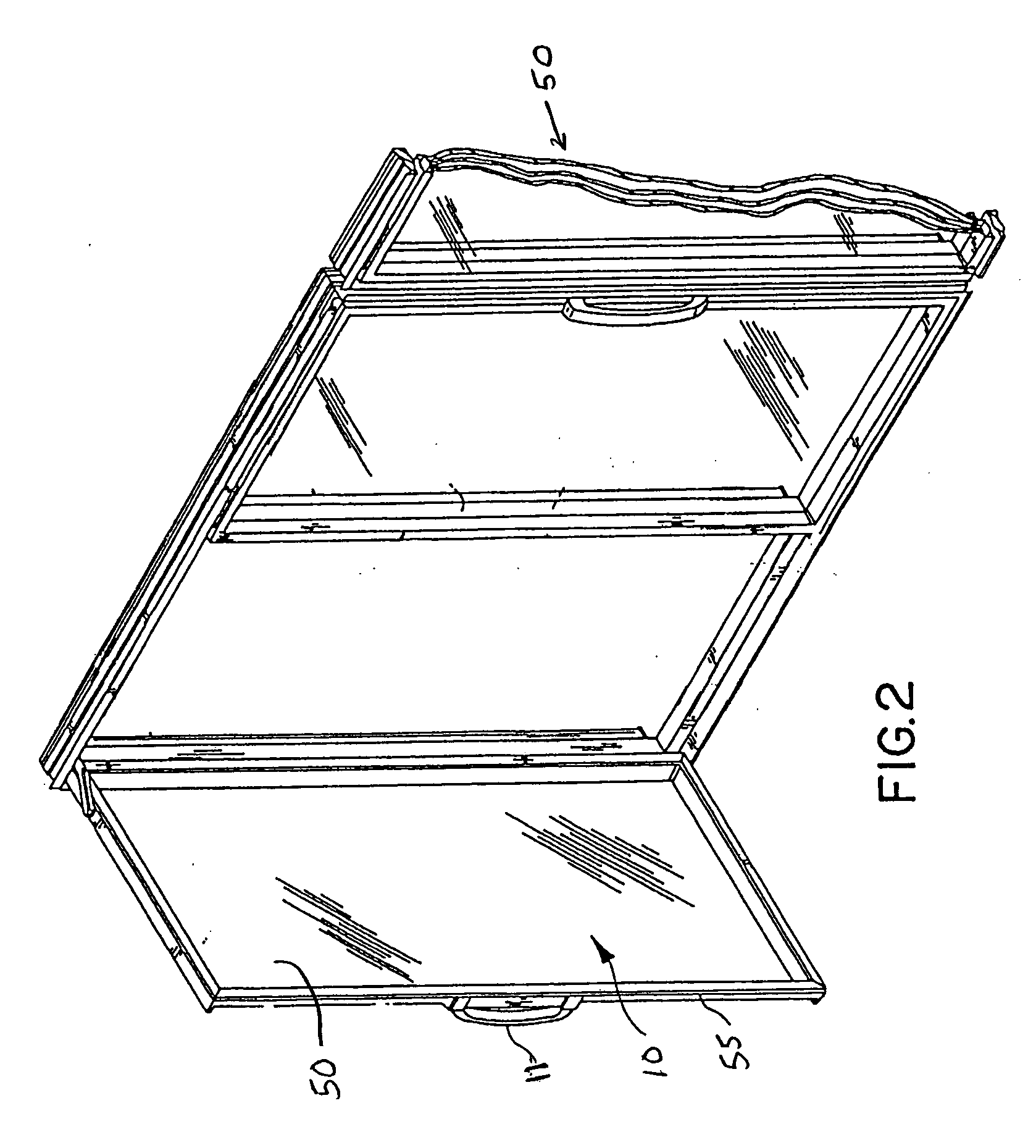Anti-fog refrigeration door and method of making the same
a refrigeration door and anti-fog technology, applied in the field of refrigeration doors, can solve the problems of high energy costs of retailers, customers are not able to see through the door, and the retailer is unable to meet the needs of customers, so as to reduce the burden of the cooling system, and improve the efficiency of the refrigeration system
- Summary
- Abstract
- Description
- Claims
- Application Information
AI Technical Summary
Benefits of technology
Problems solved by technology
Method used
Image
Examples
Embodiment Construction
[0042] In the following description, for purposes of explanation and not limitation, specific details are set forth, such as particular coatings, coating processes, sheet and film thicknesses, seal assemblies, number of sheets, sheet spacings, and methods for assembling the door, etc. in order to provide a thorough understanding of the present invention. However, it will be apparent to one skilled in the art that the present invention may be practiced in other embodiments that depart from these specific details. Detailed descriptions of well-known coatings, coating processes, sealant assemblies, and methods for assembling the door are omitted so as not to obscure the description of the present invention. For purposes of this description of the invention, terms such as external, internal, outer, and inner are descriptions from the perspective of the inside of the freezer or refrigerator compartment as is evident from the figures.
[0043] Testing, as well as computer modeling, has show...
PUM
| Property | Measurement | Unit |
|---|---|---|
| emissivity | aaaaa | aaaaa |
| thickness | aaaaa | aaaaa |
| thickness | aaaaa | aaaaa |
Abstract
Description
Claims
Application Information
 Login to View More
Login to View More - R&D
- Intellectual Property
- Life Sciences
- Materials
- Tech Scout
- Unparalleled Data Quality
- Higher Quality Content
- 60% Fewer Hallucinations
Browse by: Latest US Patents, China's latest patents, Technical Efficacy Thesaurus, Application Domain, Technology Topic, Popular Technical Reports.
© 2025 PatSnap. All rights reserved.Legal|Privacy policy|Modern Slavery Act Transparency Statement|Sitemap|About US| Contact US: help@patsnap.com



